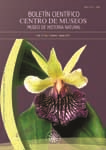Authors
Abstract
In this study, an inventory of the wild birds in the urban and suburban areas of the city of Pereira (Risaralda) was made, based on the bibliographic reports for the area, fieldwork and a review of ornithological collections. A list including 203 bird species recorded in the area of study was presented, from which 130 bird species were recorded during fieldwork. Additionally 150 genres and 47 families were identified. The species record was made using primary information sources (fieldwork) and secondary sources (bibliographic research). Two species were registered in field that had not been reported in bibliographic sources consulted about the wild birds in the city of Pereira. A total of 9 species were identified under some degree of threat. 25 migratory species were recorded. Four species of almost endemic birds that share their endemic condition with Colombian neighboring countries were observed. It is discussed and concluded that in spite of the degree of anthropic intervention proper from urban ecosystems, there still exist natural and constituted areas that can host populations of wild birds. Similarly urban birds have a very wide tolerance rank to put up with the environmental stress caused by human activity.
Keywords
References
ANÓNIMO., 2004. Comunidades de Aves en los Parques de Puebla y Cholula: Tesis, Universidad de las Américas Puebla, Puebla. http://www.udlap.mx/
ARIAS, C.; RIVERA, J.; MUÑOZ, J.; QUINTERO, C. & BERRIO, J., 2008. Avifauna Representativa Universidad Tecnológica de Pereira - Risaralda - Colombia. Pereira: Semillero de Investigación en Fauna & Fundación Ambiental WANDRA.
BENZ, F., 1998. Nociones Enseñadas en los Talleres de Ornitología, las Actividades de Observación y las Otras Etapas de mi Proyecto Realizado en Pereira (Otoño 1997). Pereira: Corporación Autónoma Regional del Risaralda (CARDER).
CORPORACIÓN AUTÓNOMA REGIONAL DEL RISARALDA -CARDER-., 2008. Cedro Negro. Boletín Informativo del Sistema Departamental de Áreas Naturales Protegidas de Risaralda, 55: 1-4.
DE JUANA, E.; DEL HOYO, J.; FERNÁNDEZ, M.; FERRER, X.; SÁEZ, R. & SARGATAL, J., 2004. Nombres en Castellano de las Aves del Mundo Recomendados por la Sociedad Española de Ornitología (Novena Parte: Orden Passeriformes, Familias Cotingidae a Motacillidae). Ardeola, 51 (2): 491-499.
ELIOZONDO, L., 2000. Empidonax flaviventris (Baird & Baird, 1843) (Mosquerito vientriamarillo). Species of Costa Rica. Instituto Nacional de Biodiversidad, INBio. http://darnis.inbio.ac.cr/FMPro?-DB=UBIpub.fp3&-lay=WebAll&-Format=/ubi/detail.html&-Op=bw&id=2653&-Find
GALLEGO, D. & CARVAJAL W., 1997. Monitoreo de Aves Grupo Observadores de Aves Colegio Héctor Ángel Arcila, La Florida - Pereira. Pereira: Corporación Autónoma Regional del Risaralda (CARDER).
GUTIÉRREZ-Z., A.; CARRILLO, E. & ROJAS, S. 2004. Guía Ilustrada de los Colibríes de la Reserva Natural Río Ñambí. Bogotá: FPAA, FELCA, ECOTONO.
HILTY, S. & BROWN, W. 1986. A Guide to the Birds of Colombia. Princeton Un. Press.
JARAMILLO, L., 1993. Aves de Colombia 167 Especies ¡Déjelas Volar! Santa fe de Bogotá: ATA Fondo Filantrópico.
JARAMILLO, L. & OLARTE, J., 1995. Colombia Verde y sus Aves. Volumen I. Páramos y Laderas de los Andes. Santa Fe de Bogotá: ATA Fondo Filantrópico.
KAUFMAN, K., 2000. Kaufmam Field Guide to Birds of North America. New York: Houghton Mifflin Company.
MCMULLAN, M.; DONEGAN, T.M. & QUEVEDO, A., 2010. Field Guide to the Birds of Colombia. Bogotá: ProAves.
MÁRQUEZ, C.; BECHARD, M.; GAST, F. & VANEGAS, V.H., 2005. Aves rapaces diurnas de Colombia. Bogotá: Instituto de Investigación de Recursos Biológicos Alexander von Humboldt.
MILESI, F. & LÓPEZ, J., 2005. El Concepto de Nicho en Ecología Aplicada: del Nicho al Hecho Hay Mucho Trecho. Ecología austral, 15 (2). Versión On-line. ISSN 1667-782X. http://www.scielo.org.ar/scielo.php?script=sci_arttext&pid=S1667-782X2005000200004
NARANJO, L.G., 1991. Ucumarí, Tierra de aves. Pereira: Corporación Autónoma Regional del Risaralda (CARDER).
OLIVARES, A., 1973. Las Ciconiformes Colombianas. Santa Fe de Bogotá: PROYSER.
PROAVES., 2009. Detalle Especies Amenazadas Registradas en la Base de Datos de ProAves (2003-2009). http://www.proaves.org
REMSEN, J.V.; CADENA, C.D.; JARAMILLO, A.; NORES, M.; PACHECO, J.F.; ROBBINS, M.B.; SCHULENBERG, T.S.; STILES, F.G.; STOTZ, D.F. & ZIMMER, K.J., 2009. A classification of the bird species of South America. http://www.museum.lsu.edu/~Remsen/SACCBaseline.html
RENJIFO, L.M.; FRANCO, A.M.; AMAYA, J.D.; KATTAN, G.H. & LÓPEZ, B., 2002. Libro Rojo de Aves de Colombia. Serie Libros Rojos de Especies Amenazadas de Colombia. Bogotá: . Instituto de Investigación de Recursos Biológicos Alexander von Humboldt y Ministerio del Medio Ambiente.
RODRÍGUEZ, J.V. & HERNÁNDEZ, J.I., 2002. Loros de Colombia. Conservación Internacional Colombia. Tropical Field Guides Series. Bogotá.
SALAMAN, P.; DONEGAN, T. & CARO, D., 2009. Listado de Aves de Colombia 2009. Conservación Colombiana, 8: 1-89. http://www.proaves.org
SARMIENTO, F., 2000. Diccionario de Ecología. http://www.uga.edu/oie/sarmiento.htm
SOCIEDAD ANTIOQUEÑA DE ORNITOLOGÍA -SAO-., 2003. Aves del Valle de Aburrá. Área Metropolitana del Valle de Aburrá. Medellín.
ZULUAGA, J., 2006. Registros de Icteurs icteurs y Machetornix rixosa en un Pequeño Humedal Artificial de Tunja, Boyacá. Colombia. Boletín SAO, XVI (2): 64-69.

 PDF (Español)
PDF (Español)
 FLIP
FLIP


















